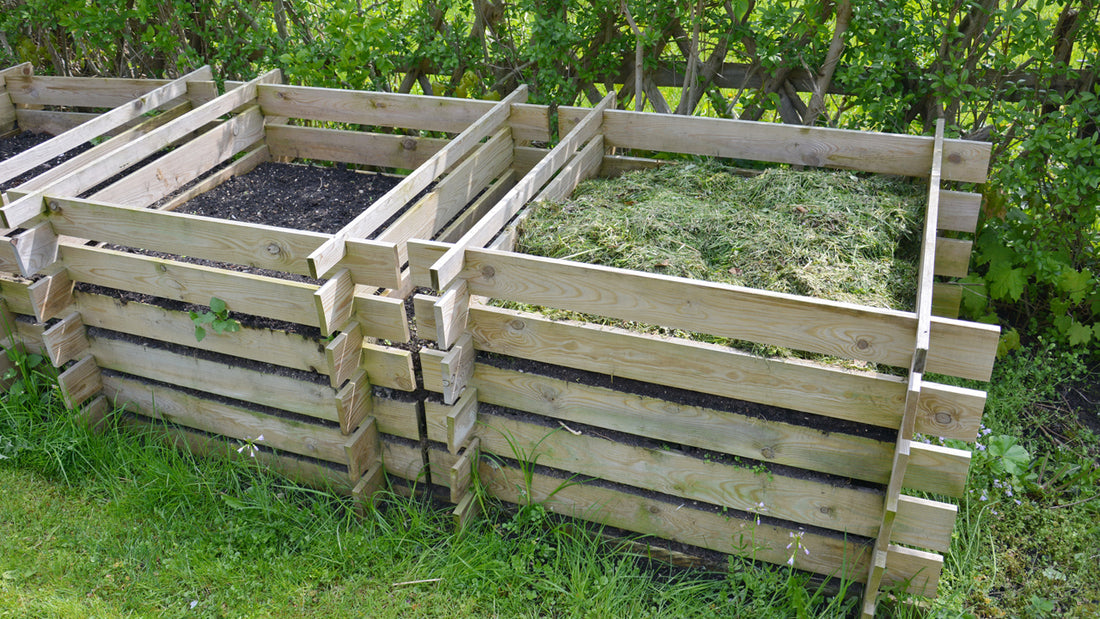Do you already compost or are looking to get started, and want to take your organic garden to the next level? Why not try making biodynamic compost! Biodynamic gardening has been around for nearly a hundred years, and is popular around the world. This gardening method was invented by scientist-philospher Rudolf Steiner, who believed that there is more to the health and vitality of a garden than simply the chemical and physical processes we can observe. He described the “dynamic” forces which include metaphysical, etheric, and astral influences. These non-material elements of the garden are taken into consideration when planting, harvesting, making compost, and doing other tasks. A major component of biodynamics is the use of “preparations”: herbal- and animal-derived products that are used to heal the earth and create balance within the garden's life energy. Six of these preparations are specifically used in making biodynamic compost.
Biodynamic Preparations
The six compost preparations are each made from an herb: yarrow, chamomile, stinging nettle, oak bark, dandelion, and valerian. Four of these are then enveloped in animal organ sheaths, and five are buried in the ground for a specific amount of time. Another non-herbal preparation is also sometimes used in compost, called horn manure. This is made from a cow horn stuffed with manure, which is also buried for a specific length of time. All of the preparations are made during the appropriate solar, lunar and astrologic phases.
Compost Preparations
- BD#502–Yarrow (Flowers of Achillea millefolium)
- BD#503–German Chamomile (Flowers of Matricaria chamomilla)
- BD#504–Stinging Nettle (Stem and leaves of Urtica dioica)
- BD#505–Oak Bark (Bark of Quercus alba)
- BD#506–Dandelion (Flowers of Taraxacum officinale)
- BD#507–Valerian (Flowers of Valeriana officianalis)

Field Spray Preparations
- BD#500–Horn Manure (Cow horns with fresh cow dung)
- BD#501–Horn Silica (Cow horns with quartz silica)
- BD#508–Horsetail Herb (Equisetum arvense)
Since the preparations are intended to provide energetic healing and not chemical benefits, only a minute quantity is required. Similar to homeopathy, the preparations' small doses are sufficient to spread their healing powers throughout the whole compost pile and, when the finished compost is applied later, into the garden itself. When applied to the compost pile, these preparations are believed to harness their life forces so they can act as catalysts to the health and balance of the earth. They are added to the compost pile when it is built. Once the composting process is complete and the compost used in your garden, the soil will be balanced to the astral rhythms, the soil will become more fertile, and the life processes will become balanced.
DIY Biodynamic Composting in One Easy Step!
Traditional biodynamic composting is designed to be done on large farms, where there is room and materials to grow and create every component of the preparations and also the composting materials themselves. The SeaCoast Biodynamic Compost for example, is created in this way. All the manure for the compost, and all the herbal and animal ingredients for the preparations, are produced on site. These farms can then follow all the specific metaphysical and biological steps involved in creating compost the traditional way. Most biodynamic gardeners simply cannot make biodynamic compost the traditional way, but fortunately for the rest of us there is an alternative method that delivers the same benefits to the composting process and the garden itself! As you build your compost pile – whether that's all at once or in stages as compostable materials become available – simply add Pfeiffer Biodynamic Compost Starter with every layer. This Starter is a blend of the six basic compost preparations, with Horn Manure and a variety of beneficial microorganisms added into the mix.
Building Your Compost Pile
- If you are building your pile all at once, do so in the standard way, but in between each layer, add a sprinkling of the Biodynamic Compost Starter.
- If you add compost to the pile over time, sprinkle some Biodynamic Compost Starter on the top of each addition to the pile by mixing it in a hose-end sprayer or a watering can, or mix a tiny amount into your kitchen compost pail when you've filled it up (a pepper shaker works well for kitchen application).
- If your compost pile is already built, it's not too late to make it biodynamic! Just poke holes half-way through the pile, spaced about a foot apart, and pour the Starter mixed with water into each hole.
- Only mix as much Starter as you will be using at a time, with however much water you need to apply it. Once it is wet, it cannot be stored for later use.
- One unit of Biodynamic Compost Starter will treat up to 1.5 tons of compost material, or a 4 x 4 x 8 foot pile. If your pile is smaller, you can use a fraction of the bag, or the whole thing. There is no harm to adding more than the minimum amount of Starter.


